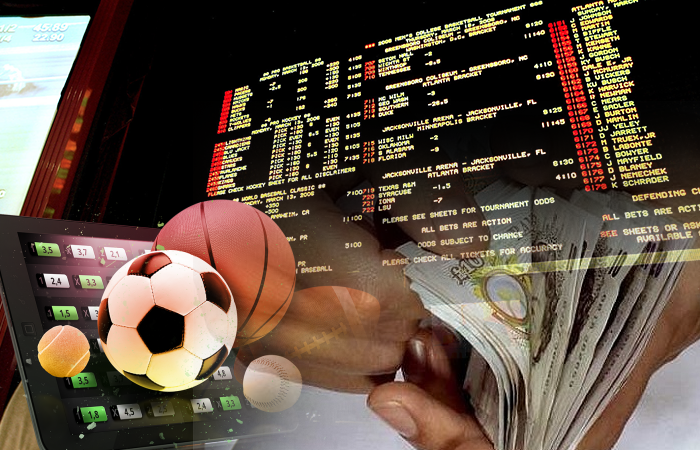
Understanding Betting Odds for Sports Events 2025
As the world of sports betting evolves, so too does the importance of understanding betting odds. In 2025, knowing how to interpret these odds is crucial for both novice and experienced bettors. Whether you’re placing your first bet or refining your strategy, grasping the core concepts of betting odds can significantly influence your wagering outcomes. For those looking to navigate the online betting landscape more efficiently, using platforms like the Understanding betting odds for sports events 2025 jeetwin app login can streamline the process.
What Are Betting Odds?
Betting odds represent the likelihood of an event occurring, particularly in sports. They are essentially a way for bookmakers to communicate how probable they believe an outcome will be. By understanding these odds, bettors can make more informed decisions and potentially increase their chances of success.
Types of Betting Odds
In sports betting, there are three primary formats of odds: fractional, decimal, and moneyline. Each format offers a different perspective on the probability and potential payout associated with a bet.
1. Fractional Odds
Fractional odds are traditionally popular in the UK. They are represented as a fraction (e.g., 5/1), indicating the profit relative to the stake. For instance, if you wager $10 at odds of 5/1, you would win $50 in profit (5 times your stake), plus your original stake back. Fractional odds are particularly useful for understanding how much profit you can make relative to your bet size.
2. Decimal Odds
Decimal odds, favored in Europe and Australia, are more straightforward. They represent the total payout (including the stake) per unit wagered. For example, odds of 6.0 mean that for every $1 you bet, you’d receive $6 back if you win, which includes your original stake of $1. Decimal odds make it easier to quickly calculate potential returns and are often preferred for online betting.
3. Moneyline Odds
Moneyline odds are commonly used in the United States and can be either positive or negative. Positive odds (e.g., +200) indicate the profit on a $100 bet, while negative odds (e.g., -150) show how much you must wager to win $100. This format might seem less intuitive at first, but with a bit of practice, it can also be easily understood. For instance, a $100 bet at +200 leads to a potential profit of $200, while a $150 bet at -150 would return $100 profit.
Reading and Interpreting Odds
To become a successful bettor, it’s vital to know how to read and interpret these odds accurately. Understanding the implied probability behind the odds will greatly enhance your betting strategy.

1. Implied Probability
Implied probability is a crucial concept that translates odds into the likelihood of an event happening. For example, fractional odds of 5/1 imply a probability of 16.67% (1 divided by (5+1)), whereas decimal odds of 6.0 convey the same probability. This can help you compare against your own assessment of the event’s outcome or the performance metrics of teams and players involved.
2. The Importance of Line Shopping
Throughout various online sportsbooks, betting odds can vary. Line shopping—comparing odds across different platforms—helps bettors ensure they get the best potential return. A lower price on odds offered can significantly impact your long-term success since even slight differences can accumulate into notable discrepancies over many bets.
Strategies Based on Odds Understanding
Once you have a solid grasp of the betting odds, strategies can be developed to maximize potential returns and mitigate risks. Here are some strategies you might consider:
1. Value Betting
Value betting involves identifying instances where the odds offered by a bookmaker are higher than the true probability of an event occurring. By betting on these occurrences, you can enhance your expected value over time. This means if you believe a team has a better chance of winning than what the odds suggest, you should consider placing a bet on that team.
2. Bankroll Management
Proper bankroll management is fundamental to long-term success in sports betting. Setting aside a specific amount for betting and determining how much of that bankroll to wager based on perceived value and confidence level in the bet can help in staying in the game longer.
3. Understanding Market Movements
Monitoring shifts in odds can be telling. Significant changes may indicate what the betting public and sharp money are doing. Understanding why these changes occur can provide valuable insight into where value may lie in a given market.
Conclusion
Understanding betting odds is essential for anyone looking to engage in sports betting in 2025. As betting markets continue to grow and evolve, being knowledgeable about the various forms of odds and how to interpret them will empower bettors to make informed decisions. Whether using fractional, decimal, or moneyline odds, recognizing implied probabilities, and adopting effective strategies like value betting or sound bankroll management will lead you closer to betting mastery. With the right approach, your betting experience can be both enjoyable and profitable.
